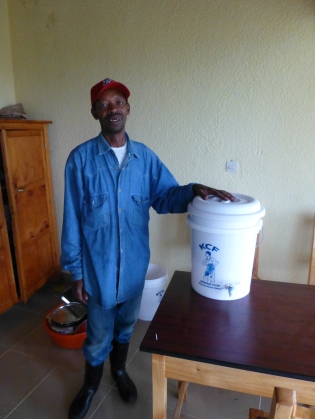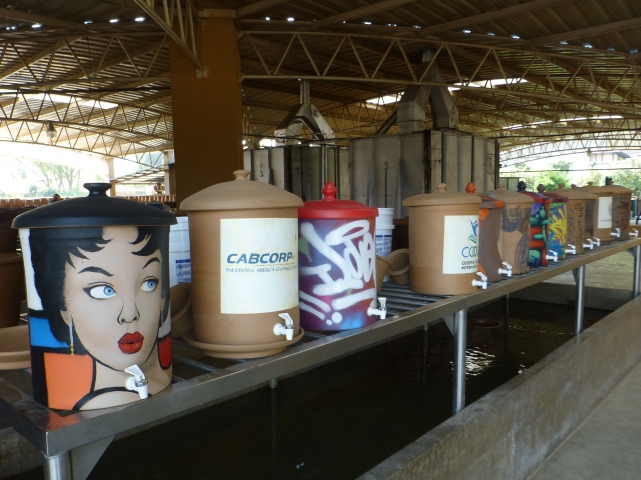While in Antigua, Guatemala, we visited this wonderful social enterprise that we have been following with interest for the past 6 years or so. Ecofiltro is a social business, manufacturing what we think is one of the best low-tech solutions for providing clean water for places where you can’t drink from the tap (or you have no tap water at all).
Ceramic Water Filters
Ecofiltros are ceramic water filters that eliminate the vast majority of bacteria and particles in the water, making it safe to drink. They purify water without boiling it, and thus eliminate the need for buying plastic bottles of purified water. They are made locally with pretty simple means. They create employment and well-being while helping the environment. The water doesn’t taste like chlorine or other chemicals, it’s sweet and tasty.
Here is how it works in short (the illustration is by Ecofiltro)
Around the world
The Ecofiltro technology was developed by Fernando Mazariegos in Guatemala. After extensive testing and proof that the filter works to international standards, he shared/open sourced it in order for it to be available around the world to anyone who would like to produce and distribute it. After all, there are more than a billion people that lack access to safe drinking water around the world.
There are several factories around the world that produce such filters now, from Latin America through Africa to South Asia. However, few of them have really managed to sell a lot of water filters. This one in Guatemala and Hydrologic in Cambodia are among the most successful in marketing and actually getting filters out there to people.

Martha actually visited such a factory in Rwanda before. It was set up at a pottery cooperative in Kigali, where people were trained on how to make the filters, but not really on how to market them. It had not sold more than 2000 filters in its several years of existence. Martha helped include the filters in a pilot project with RDIS, in which about a 1000 rural households in Rwanda got a filter each together with their improved cooking stoves, trying to prove their value for reducing greenhouse gas emissions (if people don’t boil water, they don’t burn trees and hence they emit less greenhouse gases and cut fewer trees, along with the positive health and social effects). Unfortunately it is very hard to get carbon credits for water filters and in Rwanda there is still no working strategy for getting these filters out to people and making them mainstream.
The Ecofiltro model
So back to Guatemala, we had the pleasure of meeting Philip Wilson, the man whose mission is to sell 1,000,000 of these filters by 2020 and is well on the way of achieving it. Ecofiltro’s strategy has several dimensions:
- they found a way of making the filters an aspirational product, especially by making attractive high-end containers
- they sold the high-end containers at a higher margin in order to cross-subsidize the simpler plastic-held filters for people with lower purchasing power
- they distributed filters at schools, thus providing many children access to safe drinking water, but also marketing to teachers and parents
- they managed to get many many shops, pharmacies and restaurants around Antigua to have a filter and offer free drinking water. That certainly helps market both the shops and the filter!
- they open up the factory to visitors and school excursions. We just wrote an e-mail and were invited and got almost an hour of Philip’s precious time and a tour around the factory! (see pictures and more details in our other post)
- they are currently expanding distribution into Mexico and Honduras

Outlook
Alas, even if Philip reaches his 1,000,000 filters goal, he would have covered less than 1% of the households that still need to make their drinking water safe. We certainly hope their great example will be replicated, adapted, and complemented by many more distributors around the world.
Do you have any ideas on how to get this technology to more of the people that need it?
